Choosing the right stone for pool decking and coping can be daunting, as the wrong choice can lead to discomfort, safety hazards, and costly repairs.
The rough textures or unsuitable materials can be harsh on bare feet and may become skiddy when wet, posing serious risks.
Additionally, some stones can absorb too much heat, making the poolside experience unpleasant during sunny days.
This article explores the best stones for pool decking and coping, offering options that combine style with functional benefits such as durability, comfort, and safety, ensuring your pool area is both beautiful and practical.
Importance of Stone Decking and Coping in Pool Design
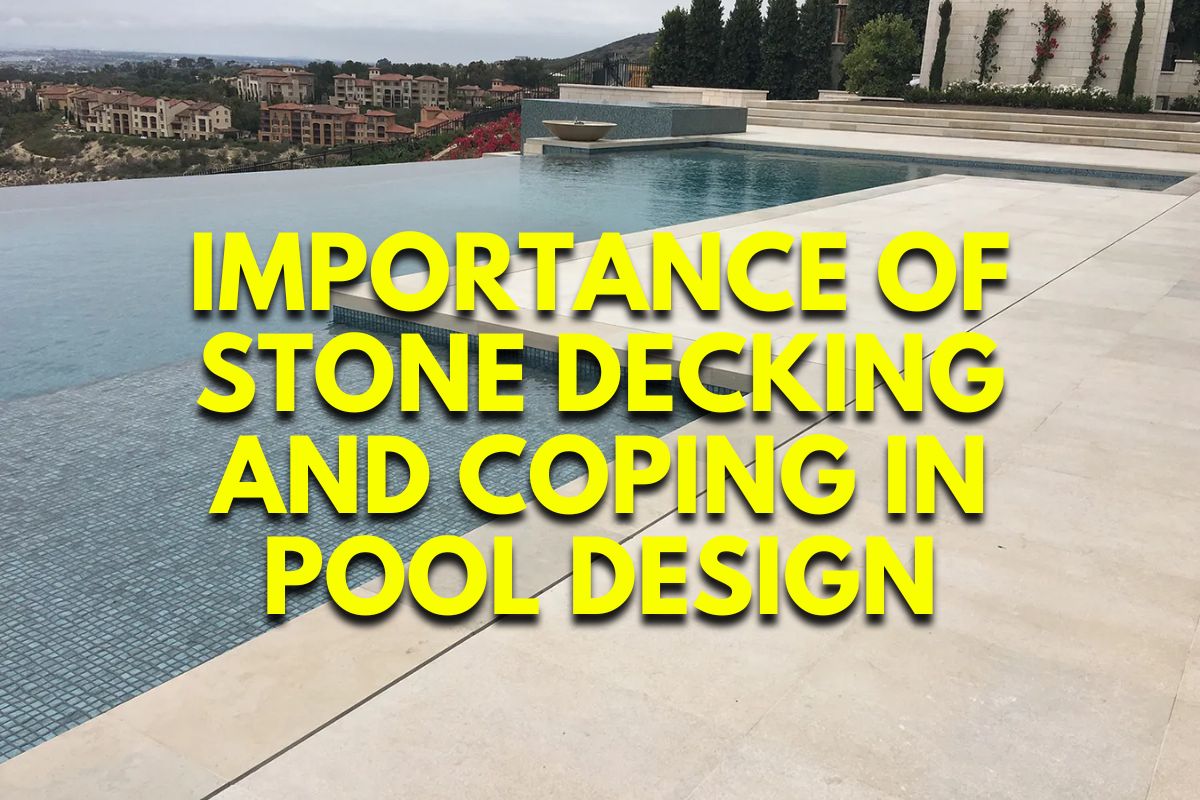
Functional Importance:
- Coping: Caps the pool edge, protecting the pool shell from water damage and providing a grippy surface for safety.
- Decking: Surrounds the pool, offering a durable and stable area for leisure activities.
Material Impact:
- Durability: Choices like travertine, limestone, and granite offer longevity.Heat Resistance: Materials like travertine remain cool, even in direct sunlight, ideal for sunny climates.
- Water Absorption: Quick water absorption of materials like travertine reduces falling hazards.
Aesthetic Contribution:
- Visual Appeal: Enhances the overall look of the pool area and complements home architecture.
- Property Value: Adds value through improved aesthetics and functionality.
- Customization: Natural variations in stone allow for unique designs tailored to any style.
Travertine: Timeless Elegance and Versatility

Travertine is a highly sought-after natural stone for pool decking and coping, prized for its timeless elegance and versatility.
This sedimentary rock is formed by the precipitation of carbonate minerals from solution in ground and surface waters and by the deposition of minerals in hot springs. As a result, it features a distinctive, porous structure that is both aesthetically appealing and functional.
One of travertine’s standout properties is its heat resistance, making it exceptionally suitable for pool areas in hot climates. The stone does not absorb heat intensely and thus remains cool to the touch under sunlight, enhancing comfort for bare feet. Additionally, travertine’s porous nature allows quick water absorption, significantly reducing the risk of falling on wet surfaces.
From an aesthetic perspective, travertine offers a palette of warm, earthy tones ranging from ivory and beige to reddish brown. These colours can blend seamlessly with various architectural styles, adding a layer of sophistication to any setting.
Furthermore, travertine can be finished in multiple ways: polished for a smooth, shiny surface, honed for a matte, refined look, or tumbled for a more textured, rustic appearance. Each provides a different ambience to the pool area.
Durable and low-maintenance, travertine is an ideal choice for pool designers seeking a balance of beauty, functionality, and longevity.
Limestone: Soft Elegance and Natural Charm

Limestone is a top choice for pool decking and coping due to its soft elegance and natural charm.
This sedimentary rock, primarily composed of calcite and aragonite, boasts a smooth, fine-grained surface with a subtle, sophisticated aesthetic appeal.
Its natural earth tones, which include creams, beiges, and greys, easily complement various landscaping and architectural styles, enhancing the overall visual harmony of outdoor spaces.
Functionally, limestone’s durability makes it suitable for pool environments. When properly sealed, it withstands various weather conditions and resists water absorption to prevent deterioration and algae growth. This characteristic is crucial for maintaining the integrity and appearance of the pool area over time.
The stone’s relatively soft texture provides a comfortable walking surface, which is important for areas frequented by bare feet.
However, to ensure safety around the pool, it’s essential to choose a finish that maximizes grip, such as a brushed or tumbled finish.
Easy to cut and shape, limestone offers versatility in design, allowing for bespoke pool shapes and edge treatments. This adaptability and limestone’s timeless appeal make it a practical and attractive option for those seeking to create a serene and inviting poolside retreat.
Slate: Rustic Appeal and Durability
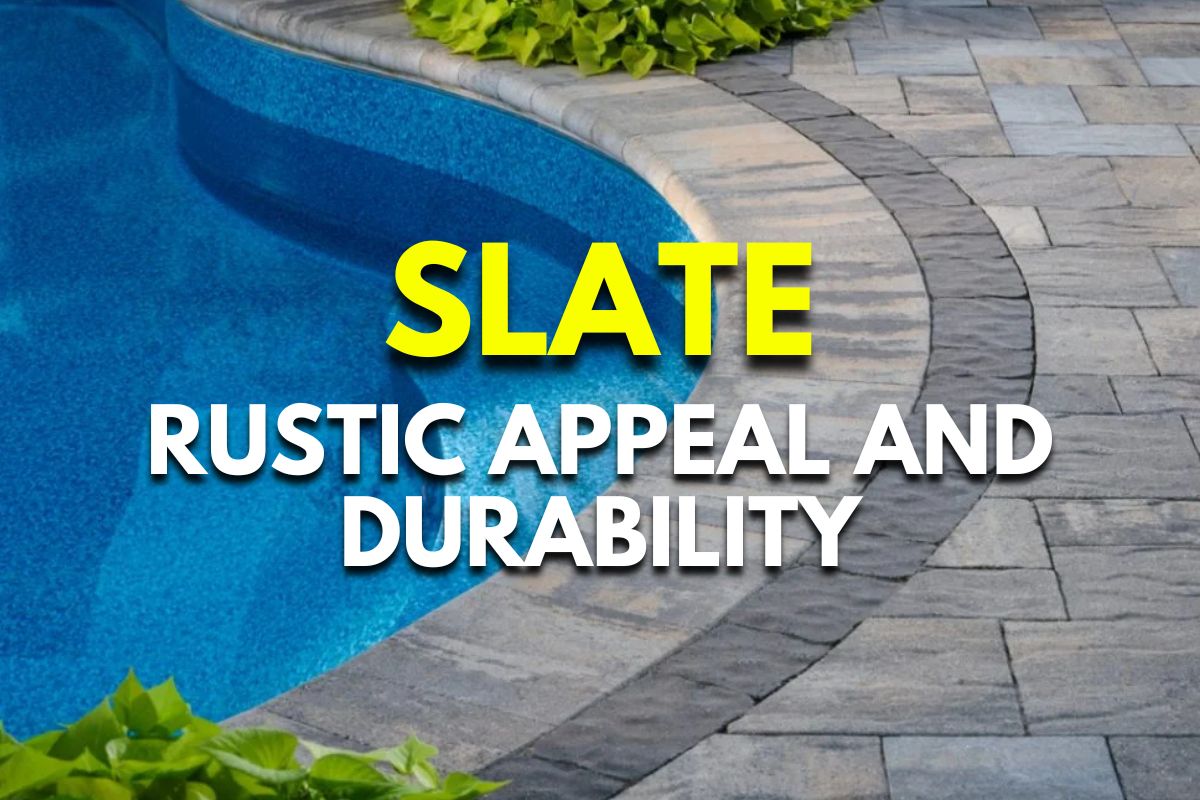
Slate stands out as an excellent material for pool decking and coping, celebrated for its rustic appeal and exceptional durability. Formed from fine-grained metamorphic rock, slate is renowned for its robustness and longevity, making it an ideal choice for high-traffic pool areas.
Its natural resistance to fade, scratches, and breaks ensures that it maintains its aesthetic integrity despite harsh weather conditions or chemical exposures typical in pool environments.
Aesthetically, slate offers various colours, from deep blues and greens to greys and purples. Each piece is characterized by unique textural striations that enhance its natural beauty.
This colour variety can seamlessly integrate into diverse design schemes, whether creating a traditional rustic look or complementing a modern, minimalist landscape.
Slate’s surface naturally provides a grippy quality due to its cleft texture, which is crucial for safety in wet areas around a pool. Additionally, it retains minimal heat and stays cool underfoot even in direct sunlight, which enhances comfort during use.
It’s easy to maintain and requires only regular cleaning and periodic sealing. Silk slate is a practical choice for those looking to blend aesthetic appeal and functional durability in their pool decking and coping.
Granite: Luxury and Durability Combined
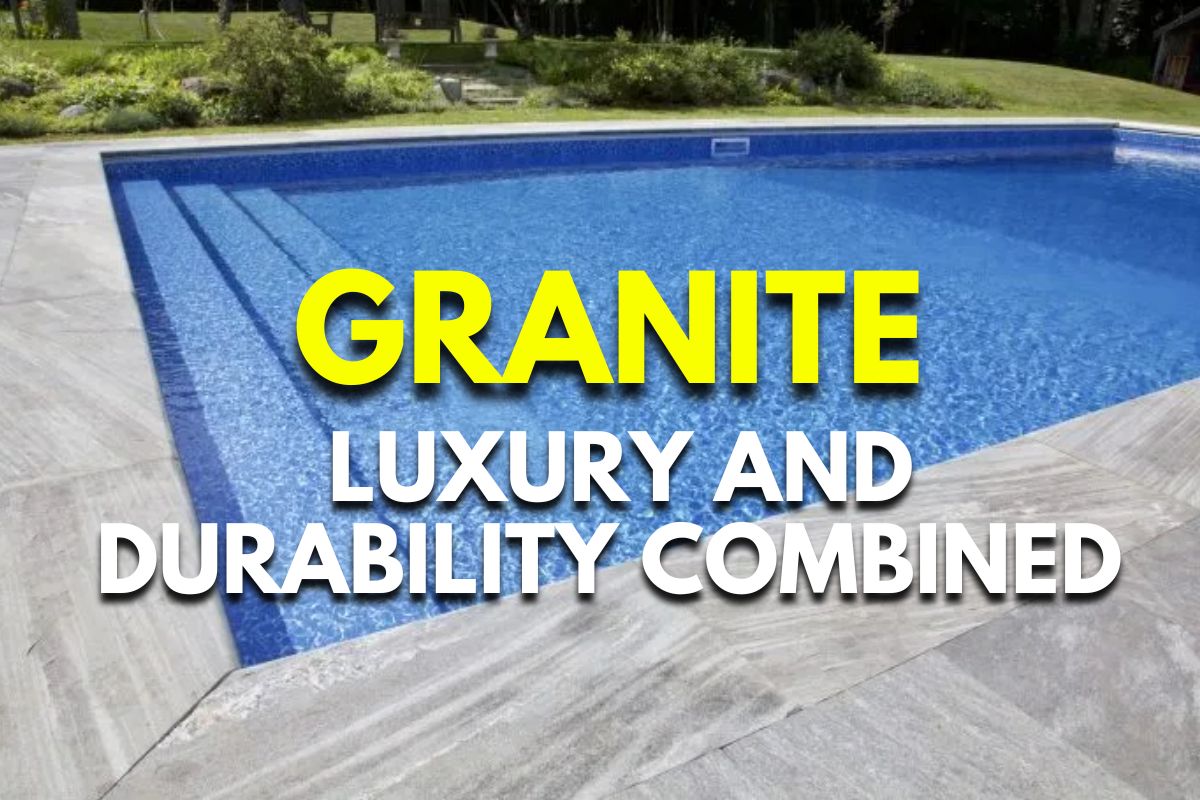
Granite stands as an exemplar of luxury and durability, making it an ideal choice for pool decking and coping.
This igneous rock, formed from the cooling of magma deep within the earth, is renowned for its hardness and resistance to abrasion, which ensures it can withstand heavy foot traffic and the vigorous conditions of an outdoor pool environment.
The robust nature of granite means it resists scratching, chipping, and etching, maintaining its pristine condition over time. It is also impervious to UV radiation, which prevents fading and keeps its rich colors vibrant under continuous sun exposure.
Granite’s very low porosity is another benefit, greatly reducing the likelihood of water absorption and minimizing risks of algae growth and staining, common issues in pool areas.
Aesthetically, granite offers a vast spectrum of colors and unique patterns, including specks, swirls, and intricate veinings that contribute to its sophisticated appearance. These characteristics allow it to complement a variety of architectural styles, from modern to traditional.
Granite does require sealing to maintain its low porosity and aesthetic quality. However, its maintenance is relatively minimal compared to softer stones, making it a cost-effective option for those looking to invest in a luxurious, long-lasting poolside experience.
Quartzite: Stylish and Resilient
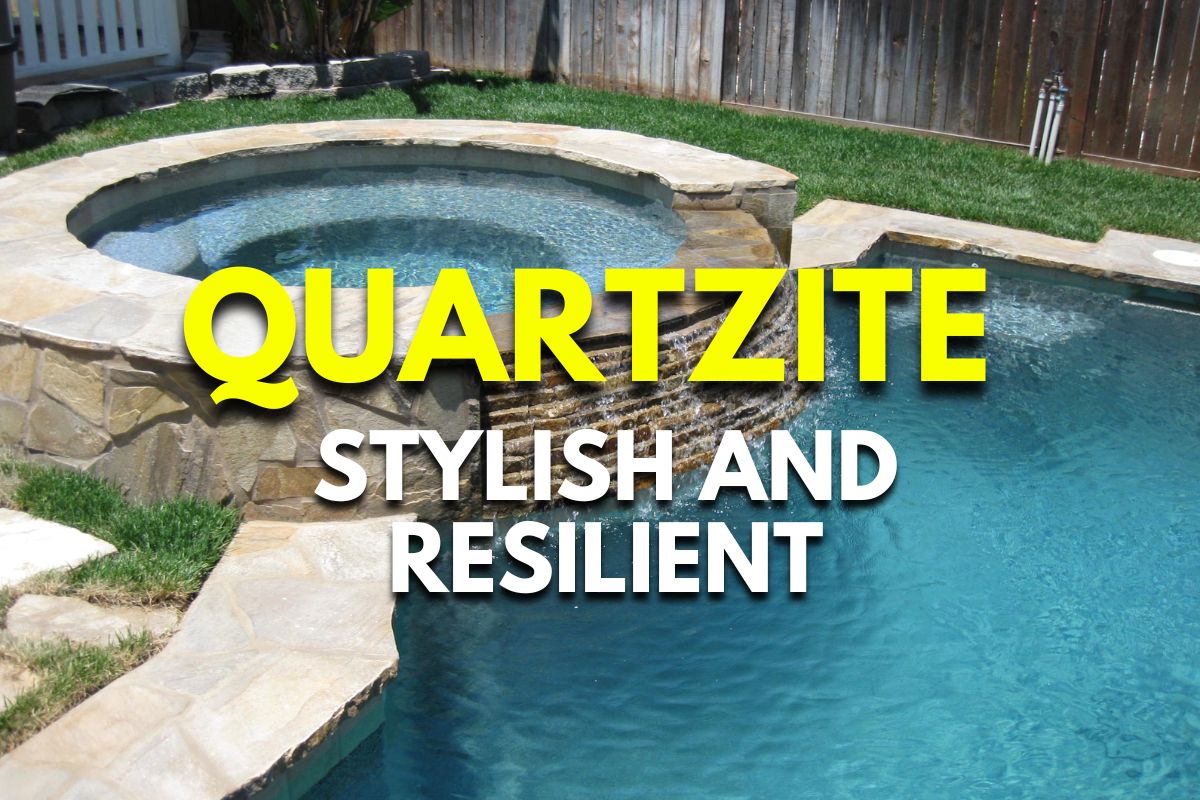
Quartzite is a superior stone choice for pool decking and coping, offering a blend of style and resilience that is ideal for high-use outdoor spaces.
Formed from sandstone that has undergone high heat and pressure, quartzite boasts a hardness and density that surpasses many other natural stones, making it highly resistant to wear and abrasion.
The durability of quartzite is a key feature, providing excellent resistance to scratching and chipping. It also stands up well against extreme weather conditions, retaining its integrity and appearance over time.
Its low porosity prevents water absorption, which is critical in preventing freeze-thaw damage in colder climates and reducing the growth of algae and mildew in wet conditions.
Aesthetically, quartzite offers a shimmering beauty with a glassy luster that can range from subtle whites and grays to striking blues and greens. The stone’s natural veining adds sophisticated visual interest and can be a focal point in both contemporary and traditional designs.
Although quartzite is generally low maintenance, it does require periodic sealing to preserve its low porosity and lustrous finish. This small investment in care ensures that quartzite remains a stunning and practical choice for any poolside application.
Choosing the Right Stone for Your Pool Decking and Coping
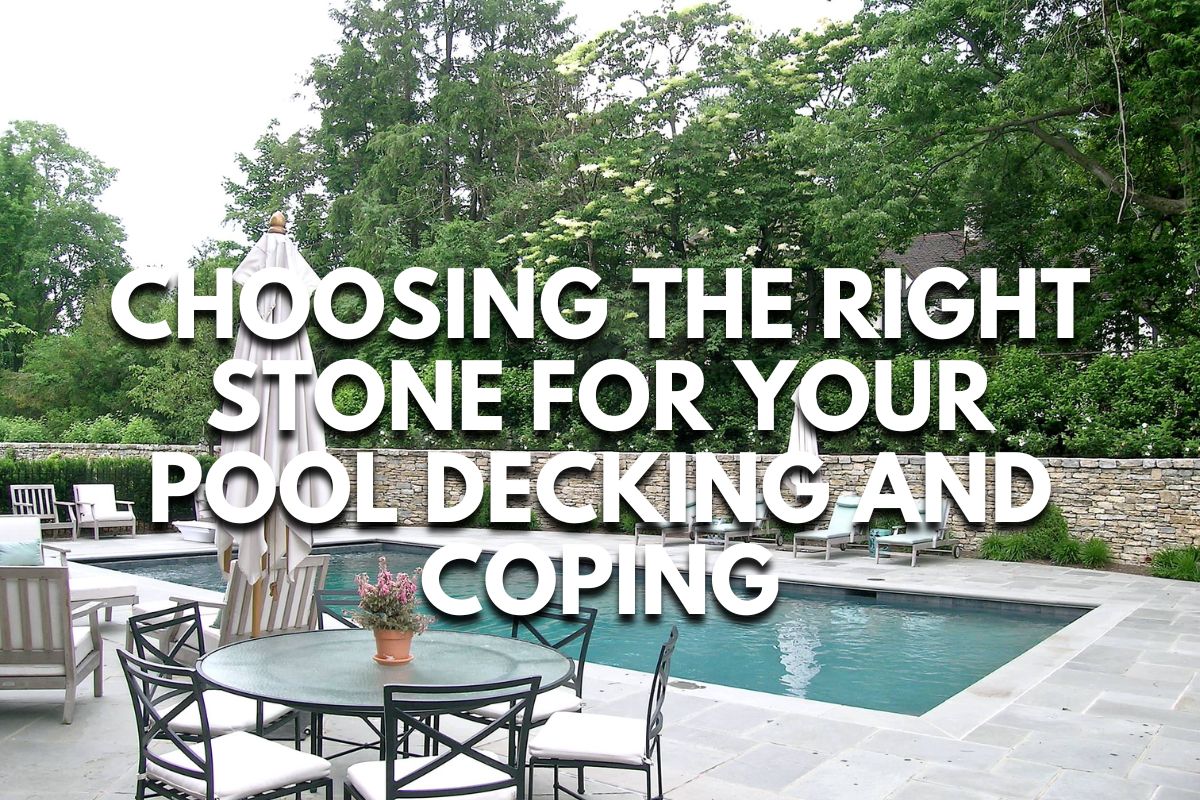
Choosing the right stone for your pool decking and coping is crucial for both aesthetics and functionality. When selecting a stone, consider these key factors:
- Durability: The stone must be able to withstand constant exposure to water, chemicals, and varying weather conditions. Hard stones such as granite, quartzite, and slate are preferred for their ability to resist abrasion, fading, and chipping.
- Heat Resistance: Pool decks are often exposed to direct sunlight. Materials like travertine and limestone stay cool and are comfortable under bare feet, making them ideal for sunny areas.
- Water Absorption: Low porosity stones like granite and quartzite prevent water absorption, reducing the risk of algae growth and staining and enhancing the stone’s longevity.
- Aesthetic Appeal: The stone should complement the architectural style of your home and surrounding landscape. Consider the stone’s colour, texture, and pattern to ensure it harmonizes with your overall design theme.
Installation and Maintenance Considerations
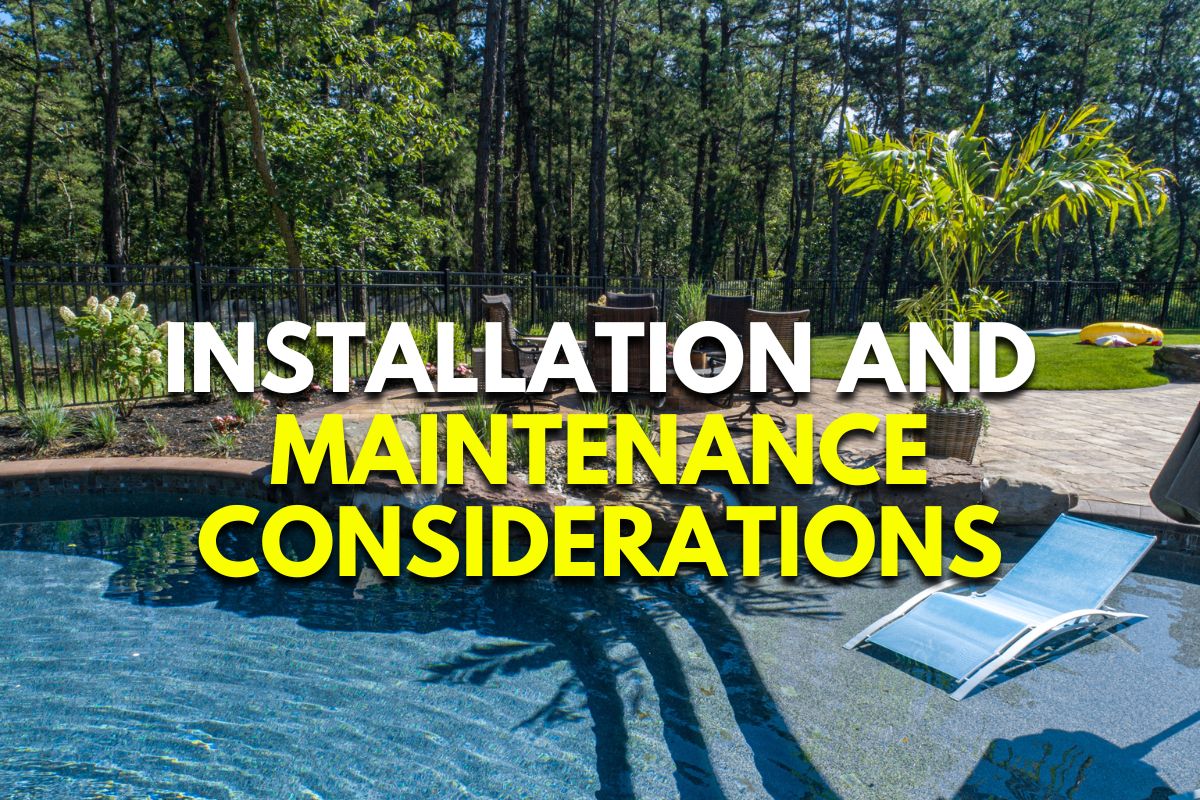
Proper installation and maintenance are critical to maximizing the longevity and appearance of stone decking and coping. Here are essential considerations:
- Installation: Professional installation is key. This process includes preparing a solid foundation, ensuring adequate drainage to prevent water pooling, and applying the correct adhesive and grouting materials suitable for outdoor and wet conditions. For coping, ensuring a secure and level fit around the pool edge is vital to prevent shifting and potential water damage to the pool structure.
- Sealing: Most stone types benefit from sealing to enhance their resistance to moisture, stains, and weather-induced wear. The initial sealing should occur post-installation, with periodic resealing recommended every two to five years, depending on the stone type and exposure to elements. Granite and quartzite, with their lower porosity, may require less frequent sealing compared to limestone and travertine.
- Cleaning: Regular cleaning with mild, non-acidic soap and water is generally sufficient. Avoid using harsh chemicals and high-pressure washing, which can damage the stone’s surface or degrade the grouting.
- Winter Care: In colder climates, ensuring proper drainage and using breathable covers can help prevent freeze-thaw cycles that cause cracking and splitting in more porous stones.
Conclusion: Call to Action
Choosing the right stone for your pool’s decking and coping fuses aesthetics with practicality, elevating both the safety and style of your outdoor space.
Consult with a professional to select a stone that suits your climate and lifestyle, and invest in quality installation and maintenance.
Create a timeless poolside that promises beauty and durability for years to come.








